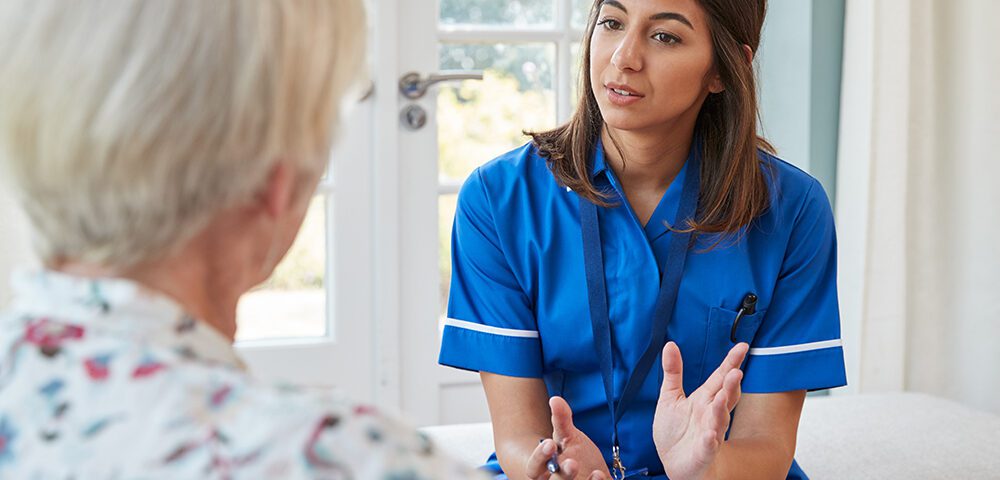Every CONTACT counts to Stop the Pressure – O
Find out how Every C-O-N-T-A-C-T Counts to #STOPTHEPRESSURE

C-O-N-T-A-C-T
Consider OPTIONS, OBSERVE, discuss, agree
The Society of Tissue Viability is very OPTIMISTIC about this year’s Stop The Pressure Campaign and throughout the week of 13th to 17th November there will be ON-GOING, OPEN-MINDED, OPPORTUNITIES to make every CONTACT count.
What OPPORTUNITIES do we have to prevent tissue damage and what should we be OBSERVING?
Regularly changing a person’s position lying or sitting is the best way to prevent tissue damage. ONGOING positional changes, off-loading pressure using specially designed mattresses and cushions, staying as active as possible, eating a healthy balanced diet OVERWHELMINGLY improves OUTCOMES. OTHER aids can help to relieve and OFF-LOAD pressure on at-risk areas of skin.
Most pressure damage arises from sitting or lying in the same position for a long time without moving. OPPORTUNITIES to make every contact count with a bed chair or other surface will prevent pressure ulcers. Carers and healthcare OCCUPATIONS OFFER ON-GOING OPPORTUNITIES to OVERCOME a sometimes OVERWHELMING subject of tissue damage prevention. It’s important to check skin regularly for any sign of pressure damage, such as discoloured areas of skin. This is particularly important to be N-BOARD and OBSERVANT in relation to any co-morbidity such as diabetes, nerve damage which could dampen or numb feelings of pain in parts of the body. OBSERVATION of skin damage in a dark-skinned person may appear different in colour; visualising the skin in good light will help BSERVE any deepening or loss of pigmentation, white or grey discoloration can also indicate tissue damage.
Tissue damage most OFTEN OCCURS when the skin and the underlying tissues are subjected to pressure, friction and/or shear are prolonged, and they can result in impaired blood supply and damage to the skin and underlying tissues.
How should we OPTIMISE care?
Each patient should go through a comprehensive risk assessment after admission, or after being transferred to healthcare services as part of the risk assessment.
People within the care sector are ONE-OF-A-KIND and as cares we should be OPEN-MINDED and OBJECTIVE in meeting their individual care needs. Creating a fact-based individual care plan that OUTLINES the person’s particularised needs is necessary for prevention of pressure ulcer damage. Being involved with OTHER ORGANISED specialisms such as OCCUPATIONAL health offer independent and ORDERLY input into the personal care plan.
The development of pressure ulcers can interfere with the patient’s functional recovery and can have OBVIOUS impact on their quality of life. In the acute sector this can also contribute to longer hospital stays. Pressure damage can also be complicated by pain and infection. OBSERVATION is essential as infection can spread from the site of the ulcer to a deeper layer of skin. This cellulitis will require a course of antibiotics. OBSERVATION of OOZE or OOZING, ODOUR, fever, changes in skin colour is an essential part of treating infection.
Throughout this year’s Stop The Pressure campaign information on the subject of pressure ulcer prevention is easily OBTAINABLE through the Society of Tissue Viability website. The week will OFFER OUTSTANDING OPPORTUNITIES to facilitate OPEN-MINDED practice and make every CONTACT count.














